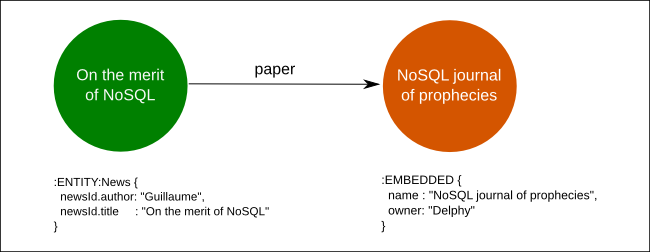Roads & PavementRoads & Pavement
Barefoot
Minimal
Low
Medium
High
Maximal
All around running shoes offer comfort and cushioning for daily runs, jogs, walks, and long mileage. They offer enough versatility for both faster and slower runs and are a great option for those who want one running shoe to do it all.
Fast run or uptempo running shoes are lightweight and responsive. They offer streamlined designs that have minimal uppers and offer a high level of energy return. These shoes are a great option for faster runs in the week or those looking for a livelier experience.
Max Cushion shoes offer premium cushioning with ample ground protection and a stable ride. These types of shoes provide abundant impact protection that softens landings while running at any pace or distance. These types of shoes are best for slower recovery runs and easy days where comfort takes priority.
Racing shoes are designed with optimal performance in mind. These types of shoes have snug-fitting uppers, energetic midsole foams, and features implemented for maximum efficiency. These types of shoes are best for runners looking to gain the ultimate advantage in races but may sacrifice some durability and comfort.
Gym Workout shoes offer a stable and versatile ride. They have a firmer underfoot feeling that provides stability for lateral movements with comfortable uppers. These types of shoes are best for trips to the gyms, cross training, casual wear, and light running. Hibernate Performance Best Practices
Road running shoes feature smooth outsoles that are designed for running on paved surfaces such as roads, sidewalks, and bike paths.
Designed to handle most trail runs, these shoes prioritize comfort and a smooth ride. These shoes are great for anything from smooth singletrack, park trails, and fireroads making them ideal for those who run from their doorstep on streets before hitting the trail.
These shoes are best used for hard, rugged trails such as shale, granite or sandstone where grip on smooth surfaces and underfoot protection are important.
Designed for use in muddy, soggy conditions, these shoes feature very aggressive outsoles that dig deep into soft ground for exceptional traction.
These shoes feature technical outsoles designed to grip snowy and icy trails making them ideal for winter trail running.
Cushioning level, or stack height, refers to how much shoe is between your foot and the ground. For this category, we reference the amount of cushioning below the forefoot as the heel height will be equal to or greater than the forefoot height.
MongoDB with Hibernate ORM IT Experts
0-13mm. The Shoe generally does not have a midsole and feels like there is no cushioning. This shoe is all about feeling the ground underfoot.
14-18mm. The shoe has a thin midsole that allows for a natural running experience. Racing shoes and minimalist shoes are common here. These shoes offer a feeling of being connected to the road or trail.
19-23mm. The shoe has a slightly cushioned feel and may feature added cushioning technologies. Performance training shoes and some trail shoes are common here. These offer protection during footstrike but prioritize a lightweight, grounded experience.
24-28mm. These shoes have a stack height that fall near the middle of the spectrum.The shoes in this category are verstaile and great for all types of runs and distances.
29-34mm. The shoe has a thick midsole and ample cushioning. These shoes are highly protective and absorb more impact than the body.
35mm plus. The shoe has an extremely thick midsole and extra cushioning. The focus is on protection and soft foam underfoot with hardly any ground feel.
Neutral shoes support the foot through a normal range of arch collapse and generally do not have a built-in technology to correct movement.
Stability shoes are a great option for those who overpronate or need added support. These shoes help to limit the inward rolling motion of the ankle while running or walking and assist in guiding the foot straight through the gait cycle. Introduction to JPA and Hibernate Advance JPA tutorial Jstobigdata
Product Details:
Hibernate Object Mapping for NoSQL Datastores store, Eclipse JNoSQL One API to many NoSQL databases The Eclipse store, Javarevisited 10 Reasons to learn MongoDB NoSQL Database in 2024 store, How To Choose A NoSQL Database For OOP Aristek Systems store, What are the Pros and Cons of NoSQL store, Using JPA applications in the era of NoSQL Introducing Hibernate store, MongoDB with Hibernate ORM IT Experts store, Kotlin and JPA by ukasz Pi ta Kt. Academy store, MySQL MySQL NDB Cluster NoSQL store, Hibernate OGM JPA pour NoSQL YouTube store, Javarevisited Top 5 NoSQL Databases Programmers Should Learn in store, NoSQL Options for Java Developers Okta Developer store, NoSQL with Hibernate OGM Part three Building a REST application store, Top 10 Open Source NoSQL Databases in 2020 GeeksforGeeks store, Hibernate OGM 5.4.1.Final Reference Guide store, Be Cautious When Using Hibernate for Date Type Manipulation with store, Introduction to JPA and Hibernate Advance JPA tutorial Jstobigdata store, MongoDB with Hibernate ORM IT Experts store, Hibernate Performance Best Practices store, Hibernate OGM NoSQL HOGM5viaHNAPI JTA Tomcat8 src main resources store, Introducing Hibernate OGM porting JPA applications to NoSQL store, NoSQL Options for Java Developers Okta Developer store, Hibernate OGM The power and simplicity of JPA for NoSQL datastores store, Top 5 Reasons to Choose NoSQL GeeksforGeeks store, NoSQL Data Modeling Techniques Highly Scalable Blog store, Introduction to NoSQL Cloud Database Services GeeksforGeeks store, What is JPA Introduction to Java persistence InfoWorld store, How To Choose A NoSQL Database For OOP Aristek Systems store, Types Of NoSQL Databases And Examples JavaTechOnline store, Object Relational Mapping ORM with MongoDB Data Entities in Java store, Hibernate OGM JPA pour NoSQL store, Forget Hibernate. Jooq is by far the best database abstraction store, NoSQL store, hibernate ogm README.md at main hibernate hibernate ogm GitHub store, Introducing Jakarta NoSQL InfoQ store, Hibernate OGM 5.4.1.Final Reference Guide store, Pro Hibernate and MongoDB SpringerLink store, Can I use Hibernate with MongoDB Quora store, Hibernate OGM 5.4.1.Final Reference Guide store, Using JPA applications in the era of NoSQL Introducing Hibernate store, Using JPA applications in the era of NoSQL Introducing Hibernate store, Hibernate OGM 5.4.1.Final Reference Guide store, Hibernate OGM Reference Guide store, A Guide to Hibernate OGM Baeldung store, Hibernate OGM Reference Guide store, Working with Hibernate MongoDB Easy Steps Learn Hevo store, A Guide to Hibernate OGM Baeldung store, Hibernate OGM 5.4.1.Final Reference Guide store, Hibernate OGM 5.4.1.Final Reference Guide store, Hibernate OGM 5.4.1.Final Reference Guide store, Product Info:
Hibernate for nosql store.
- Increased inherent stability
- Smooth transitions
- All day comfort
Model Number: SKU#7582080




